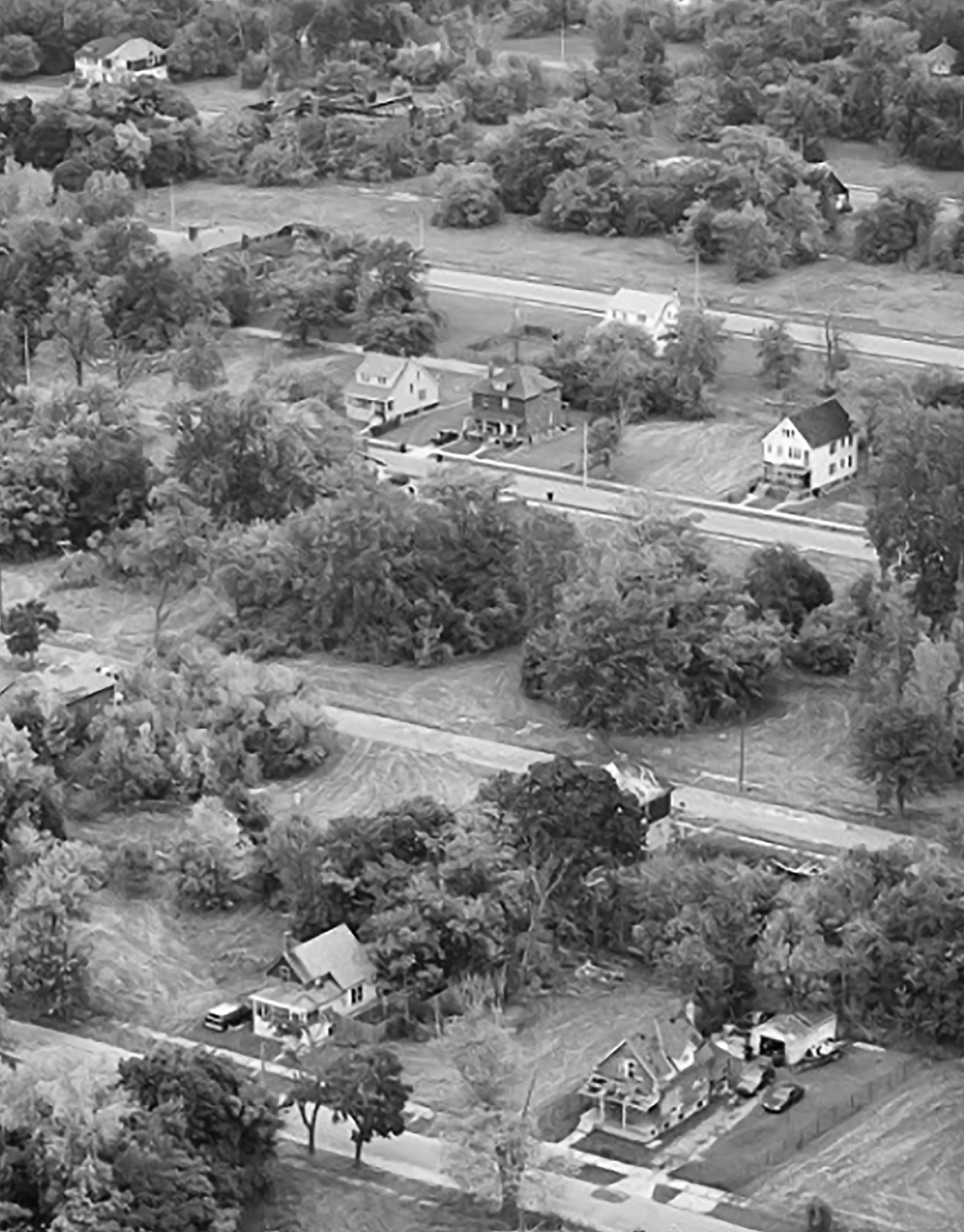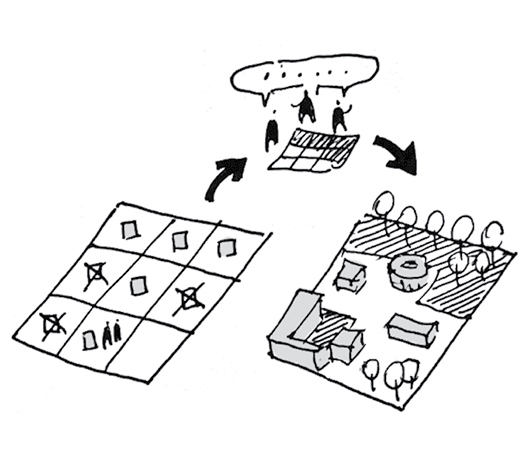13.4. Urban Consolidation
Aus Pattern Language Wiki
At times the Polycentric Region is developing erratically, and emphasis needs to be shifted to consolidate some areas.
Problem-statement: In some areas where homes have been lost due to environmental disasters or population decline, it is sensible to consolidate homes and businesses in more compact, walkable areas, and to create new public spaces or environmental preserves with the remaining land.
Discussion: The decision to consolidate development needs to be a democratic one, taking special care to allow residents to choose their own futures. However, often there are no residents, or few residents, and a more sensible alternative is to offer them a higher-quality alternative in a consolidated area.
In practice, the obstacle to urban consolidation has been a legal one: resistance coming from both government agencies and the insurance companies underwriting reconstruction. Those entities insist that what is rebuilt either has to exactly duplicate what was destroyed, or the residents have to be forcibly removed to entirely new locations. Of course, residents are often extremely angry at this latter idea. In both cases, a rigid bureaucratic restriction makes it impossible to upgrade a region toward a much more resilient (and human) type of urbanism. Planning regulations often reinforce this flawed approach. We need a more “agile” form of planning, to produce the more “agile” form of urbanism that we need for the future.
Therefore:
When consolidation of urban areas is warranted, take care to give the remaining homeowners a say in their future. Create a meaningful choice for a more consolidated, higher-quality urban form, with new parks and green spaces nearby.
Give people resources to choose whether to relocate, and how to rebuild, through the Neighborhood Planning Center. Facilitate rebuilding by providing Entitlement Streamlining.
¹ See DPZ CoDesign (2006). Unified New Orleans Plan, District 6. Miami: DPZ CoDesign. Summary available on the Web at https://www.dpz.com/Projects/0632
Mehaffy, M. et al. (2020). URBAN CONSOLIDATION (pattern). In A New Pattern Language for Growing Regions. The Dalles: Sustasis Press. Available at https://pattern-language.wiki/.../Urban_Consolidation
SECTION I:
PATTERNS OF SCALE
1. REGIONAL PATTERNS
Define the large-scale spatial organization…
1.4. 400M THROUGH STREET NETWORK
2. URBAN PATTERNS
Establish essential urban characteristics…
3. STREET PATTERNS
Identify and allocate street types…
4. NEIGHBORHOOD PATTERNS
Define neighborhood-scale elements…
5. SPECIAL USE PATTERNS
Integrate unique urban elements with care…
6. PUBLIC SPACE PATTERNS
Establish the character of the crucial public realm…
7. BLOCK AND PLOT PATTERNS
Lay out the detailed structure of property lines…
8. STREETSCAPE PATTERNS
Configure the street as a welcoming place…
9. BUILDING PATTERNS
Lay out appropriate urban buildings…
10. BUILDING EDGE PATTERNS
Create interior and exterior connectivity…
10.1. INDOOR-OUTDOOR AMBIGUITY
SECTION II:
PATTERNS OF MULTIPLE SCALE
11. GEOMETRIC PATTERNS
Build in coherent geometries at all scales…
11.2. SMALL GROUPS OF ELEMENTS
12. AFFORDANCE PATTERNS
Build in user capacity to shape the environment…
13. RETROFIT PATTERNS
Revitalize and improve existing urban assets …
14. INFORMAL GROWTH PATTERNS
Accommodate “bottom-up” urban growth…
15. CONSTRUCTION PATTERNS
Use the building process to enrich the result…
SECTION III:
PATTERNS OF PROCESS
16. IMPLEMENTATION TOOL PATTERNS
Use tools to achieve successful results…
16.2. ENTITLEMENT STREAMLINING
16.3. NEIGHBORHOOD PLANNING CENTER
17. PROJECT ECONOMICS PATTERNS
Create flows of money that support urban quality…
17.4. ECONOMIES OF PLACE AND DIFFERENTIATION
18. PLACE GOVERNANCE PATTERNS
Processes for making and managing places…
18.3. PUBLIC-PRIVATE PLACE MANAGEMENT
19. AFFORDABILITY PATTERNS
Build in affordability for all incomes…
19.1. INTEGRATED AFFORDABILITY
20. NEW TECHNOLOGY PATTERNS
Integrate new systems without damaging old ones…
20.2. RESPONSIVE TRANSPORTATION NETWORK COMPANY


